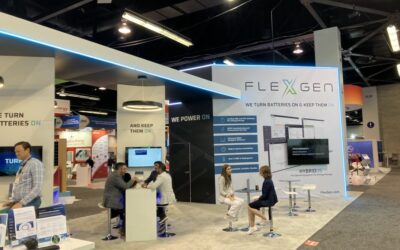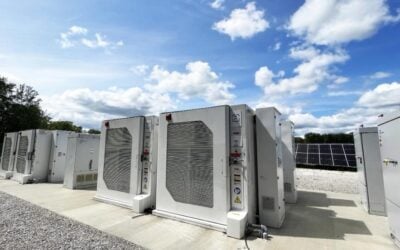
Access to grid services markets could be a critical part of enabling wider adoption of solar PV and battery storage for low-income households, partners behind a new programme in California have said.
Earlier this month, California community energy non-profit group The Energy Coalition (TEC) secured financing for battery storage installations in Bassett and Advocado Heights, two unincorporated communities in Los Angeles’ San Gabriel Valley.
Enjoy 12 months of exclusive analysis
- Regular insight and analysis of the industry’s biggest developments
- In-depth interviews with the industry’s leading figures
- Annual digital subscription to the PV Tech Power journal
- Discounts on Solar Media’s portfolio of events, in-person and virtual
TEC has enlisted battery storage and virtual power plant (VPP) specialist Swell Energy to provide systems, together with GRID Alternatives, a solar installation and solar workforce skills charity. On the financing side, distributed infrastructure financier Perl Street and VC Urban US Capital are working with TEC on the project, called Bassett Avocado Heights Advanced Energy Community (BAAEC).
Households can get a solar PV system typically ranging from 3kW to 5kW, and receive either one or two Tesla Powerwall home battery storage systems. BAAEC will also pay for roof upgrades in some cases, “to ensure that roof conditions are not a barrier to equitable access to solar installation,” a TEC spokesperson told Energy-Storage.news.
The programme is made possible by California’s Self-Generation Incentive Program (SGIP), which has successfully driven uptake of solar – and more recently energy storage – in the state, offering rebates for equipment purchases.
Perl Street’s financing provides immediate access to SGIP rebates and other state-level incentive programmes, while Urban US Capital is providing funding.
“Securing this financing was a key milestone in ensuring residents in disadvantaged communities have affordable access to clean, renewable energy,” TEC director of energy innovation Genaro Bugarin said.
“Through residential solar plus storage and electrification measures, we are improving residents’ comfort and safety, and ensuring everyone participates in the transition to our clean energy future.”
While SGIP offers 25% equipment cost rebates for general market purchases of clean energy technologies, for low-income communities, the rebate rises to 80%. This latter funding comes from the ‘Equity’ tier of SGIP.
A third tier, ‘Equity Resilience’ provides funding for microgrids and other solutions to providing backup power for remote communities. While a 100% rebate is available for this tier, a Perl Street spokesperson noted that funding for this tier has already been fully allocated.
Perl Street’s representative said that the remaining 20% of the capital cost, which can be considered gap funding, is being contributed “in a limited portion” by the California Energy Commission (CEC), adding that for the programme to go beyond its initial 50 homes, that gap needs to be bridged.
According to Perl Street, SGIP, and especially its Equity and Equity Resiliency tiers are excellent in ensuring that “renewable technology gets into the hands of those who really do need it most” in low-income or disadvantaged communities.
Stacking revenues, incentives, and cutting red tape are key
TEC said that its partners are “continuously looking at how to stack incentives” available for such programmes, starting with SGIP, to help lower the cost and improve the business case for adoption of solar and storage by low-income communities.
However, it said, while BAAEC is hoping to break down those barriers in regions outside of California too, the business case at the moment does largely depend on what incentives are available at state level.
According to Perl Street though, the same kind of financing programme could “theoretically” work in other states. Most rebate programmes only allow for money to be claimed back at the end of the installation process, meaning the high upfront cost at the beginning is otherwise prohibitive for many customers and communities.
Changes to energy pricing policies will also be needed, Perl Street said.
The Perl Street spokesperson told Energy-Storage.news that rather than seeing similar 80% level rebates paid out in other states, a few reforms to the way batteries and solar can be installed and earn money would be desirable.
Perl Street offered four examples: reducing permitting and interconnection red tape and waiting time, more capacity payment programmes, better certainty over various programmes and their pricing and more real-time and time-of-use pricing of electricity.
Real-time or time-of-use (ToU) pricing can allow for better alignment of electricity supply with demand, and creates “a stronger use case for storage with renewables,” while capacity payments and demand response programmes can reward energy storage assets “for the value they bring to the grid”.
Meanwhile, in terms of certainty, Perl Street said incentive programmes are often only committed to last a year or two, while eligibility criteria is published and applications sometimes only open three to six months before taking effect.
“You can’t finance a battery off that uncertainty,” the Perl Street spokesperson said.
The exact amount of incentive or rebate needed to make a programme such as this viable depends on being able to earn revenues in two ways: market participation in grid services programmes, and commercial value generated by the asset to the user.
Further to that, while the TEC programme leans only on state-level subsidies, the Federal investment tax credit (ITC) could provide a strong driver in other parts of the US. Perl Street highlighted that a 30% ITC will be available to most programmes of this type, with 20% adders for installations in low-income areas or in ‘energy communities’ (regions with local economies that are largely dependent on their local energy industry).






